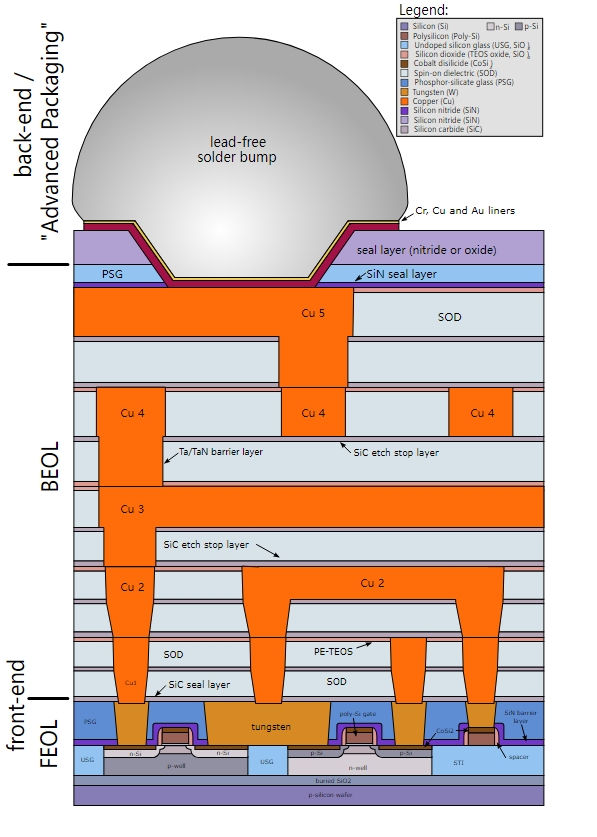
- English
- Español
- Português
- русский
- Français
- 日本語
- Deutsch
- tiếng Việt
- Italiano
- Nederlands
- ภาษาไทย
- Polski
- 한국어
- Svenska
- magyar
- Malay
- বাংলা ভাষার
- Dansk
- Suomi
- हिन्दी
- Pilipino
- Türkçe
- Gaeilge
- العربية
- Indonesia
- Norsk
- تمل
- český
- ελληνικά
- український
- Javanese
- فارسی
- தமிழ்
- తెలుగు
- नेपाली
- Burmese
- български
- ລາວ
- Latine
- Қазақша
- Euskal
- Azərbaycan
- Slovenský jazyk
- Македонски
- Lietuvos
- Eesti Keel
- Română
- Slovenski
- मराठी
- Srpski језик
Oxidation in Semiconductor Processing
2024-09-11
In semiconductor manufacturing, a wide range of highly reactive chemicals are involved in various processes. The interaction of these substances can lead to issues such as short circuits, especially when they come into contact with one another. Oxidation processes play a critical role in preventing such problems by creating a protective layer on the wafer, known as the oxide layer, which acts as a barrier between different chemicals.
One of the primary goals of oxidation is to form a layer of silicon dioxide (SiO2) on the surface of the wafer. This SiO2 layer, often referred to as a glass film, is highly stable and resistant to penetration by other chemicals. It also prevents the flow of electrical current between circuits, ensuring that the semiconductor device functions properly. For instance, in MOSFETs (metal-oxide-semiconductor field-effect transistors), the gate and the current channel are isolated by a thin oxide layer known as the gate oxide. This oxide layer is essential for controlling the flow of current without direct contact between the gate and the channel.

semiconductor process sequence
Types of Oxidation Processes
Wet Oxidation
Wet oxidation involves exposing the wafer to high-temperature steam (H2O). This method is characterized by its rapid oxidation rate, making it ideal for applications where a thicker oxide layer is required in a relatively short time. The presence of water molecules allows for faster oxidation since H2O has a smaller molecular mass than other gases commonly used in oxidation processes.
However, while wet oxidation is fast, it has its limitations. The oxide layer produced by wet oxidation tends to have lower uniformity and density compared to other methods. Additionally, the process generates by-products such as hydrogen (H2), which can sometimes interfere with subsequent steps in the semiconductor fabrication process. Despite these drawbacks, wet oxidation remains a widely used method for producing thicker oxide layers.
Dry Oxidation
Dry oxidation uses high-temperature oxygen (O2), often combined with nitrogen (N2), to form the oxide layer. The rate of oxidation in this process is slower compared to wet oxidation due to the higher molecular mass of O2 compared to H2O. However, the oxide layer formed by dry oxidation is more uniform and denser, which makes it ideal for applications where a thinner but higher-quality oxide layer is required.
A key advantage of dry oxidation is the absence of by-products like hydrogen, ensuring a cleaner process that is less likely to interfere with other stages of semiconductor manufacturing. This method is especially suitable for thin oxide layers used in devices requiring precise control over the thickness and quality of the oxide, such as in gate oxides for MOSFETs.
Free Radical Oxidation
The free radical oxidation method utilizes high-temperature oxygen (O2) and hydrogen (H2) molecules to create a highly reactive chemical environment. This process operates at a slower oxidation rate, but the resulting oxide layer has exceptional uniformity and density. The high temperature involved in the process leads to the formation of free radicals—highly reactive chemical species—that facilitate oxidation.
One of the major benefits of free radical oxidation is its ability to oxidize not only silicon but also other materials such as silicon nitride (Si3N4), which is often used as an additional protective layer in semiconductor devices. Free radical oxidation is also highly effective in oxidizing (100) silicon wafers, which have a denser atomic arrangement compared to other types of silicon wafers.
The combination of high reactivity and controlled oxidation conditions in free radical oxidation results in an oxide layer that is superior in terms of both uniformity and density. This makes it an excellent choice for applications that require highly reliable and durable oxide layers, particularly in advanced semiconductor devices.
Semicorex offers high-quality SiC parts for diffusion processes. If you have any inquiries or need additional details, please don't hesitate to get in touch with us.
Contact phone # +86-13567891907
Email: sales@semicorex.com




